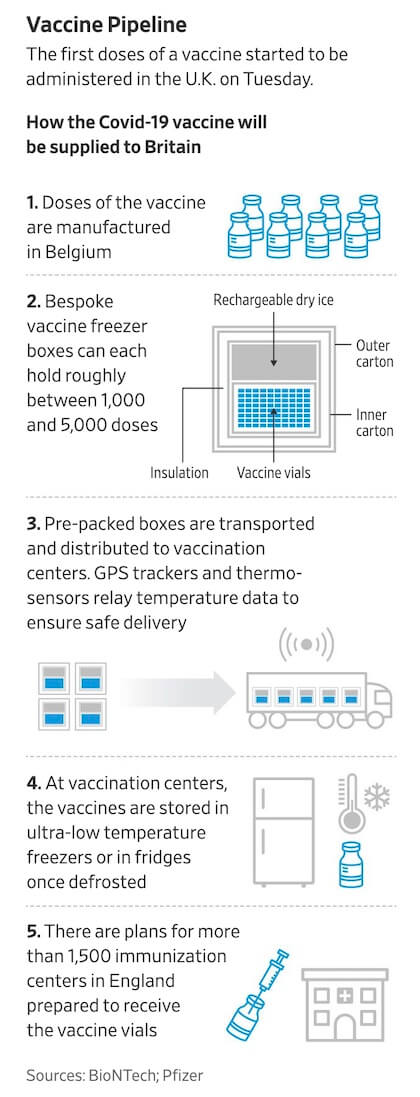
Freight: Offloading the Gender Thing
December 4, 2020
Calculating Zero-Emission Futures
December 17, 2020Getting Them Delivered.
 And now, the vaccine.
And now, the vaccine.
It’s been challenge enough to get to where we are now: the pandemic, the loss, the struggle between opening and closing of businesses and schools, the human toll, the economic toll. Drug companies fast-tracking research and testing to get a safe vaccine ready for distribution.
It’s no surprise that the transportation industry becomes an essential link, a bridge between production and delivery.
The Wall Street Journal describes England’s distribution of the vaccine, with the eyes of the world on it to gauge efficiency:
“Workers at the Pfizer Inc. plant in Puurs, Belgium, loaded thousands of vials of the liquid, stored at nearly 100 degrees below zero Fahrenheit, into custom-made thermally protected shipping containers and packed with dry ice. Loaded onto anonymous trucks, they crossed 125 miles to the French coast and sped by train under the English Channel. By Thursday evening, three trucks were heading across the U.K. and a fourth was crossing the Irish Sea.”
And this key insight: “For vaccines to halt then reverse the pandemic, similar drills must occur thousands of times over, all around the world, in places far less organized than Northern Europe.”
Temperature matters. Pfizer’s vaccine must be stored at -94 degrees Fahrenheit. Moderna’s vaccine needs to be shipped and stored at -20 degrees Celsius. AstraZeneca’s doesn’t need subzero temperatures but must be refrigerated.
Logistics, as always, includes ⏤ and pivots on ⏤ the human element. by the time Pfizer’s first vaccine batches were cleared, carriers had waited eight hours and “the truck drivers were about to exceed the amount of time they could work, so they had to call a replacement crew, who arrived in time to get the shipment out.”
The labs have thermal sensors and GPS monitors on the shipments, measuring temperature, able to alert the driver if he or she has strayed from the route, and even triggering a signal if any package has been opened in route.
The airline industry is also preparing for delivery, with the International Air Transport Association estimating that a single dose for the planet’s 7.9 billion people would fill 8,000 Boeing 747 cargo airplanes.
Then there’s the final-mile delivery consideration: getting the vaccines from truck to local deliveries throughout a city and rural community, maintaining the required temperature throughout the process, and assuring the receiving facility also has the right temperature-controlled containers.
Finally, a defrosted vaccine vial can remain stable and effective for up to five days if kept at the proper temperature. That means, says The Journal, “not only a race to get vaccines to their intended destinations, but a need for clear communication between vaccination centers and warehouses to prevent wastage.”
Here’s to preventing wastage. Here’s to clear communication. Here’s to your health.

